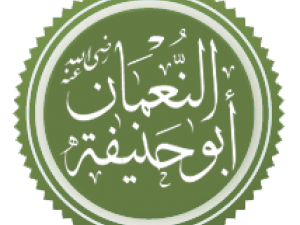Short Description
Abu Haneefa was born as Nu’man bin Thabit bin Marzuban. His grandfather Marzuban was an Afghan from Kabul. Unlike most Arabic names, the name Abu Haneefa is derived from the name of one of his daughters,
Abu Haneefa was born as Nu’man bin Thabit bin Marzuban. His grandfather Marzuban was an Afghan from Kabul. Unlike most Arabic names, the name Abu Haneefa is derived from the name of one of his daughters, The people of Baghdad relate that Haneefa, the daughter of the Imam, was well known for her piety and showed great intelligence and wisdom at an early age. She had her own halqa (a study circle) where she instructed students in matters of religion. One day, a group of women asked her how so many individual men and women could work together for the common good even though they had their own separate families. Haneefa asked each of the women to bring a cup of milk. Taking a large ceramic jug from her father’s house, she poured the milk from each of the individual cups into the jar. “Now, tell me”, she asked each of the ladies, “which portion of the milk is yours”. The women instantly understood that the community was like the milk in the jar. The milk came from different cups but it was now one. As the fame of Haneefa spread, people started to refer to the Imam as Abu Haneefa (the father of Haneefa).
Marzuban was a successful merchant, engaged in the silk trade through the ancient caravan silk road leading from India through Afghanistan, Central Asia to China. He entered the fold of Islam during the period of Khulfa e Rashideen and moved to the garrison city of Kufa in southern Iraq. Located not far from the port city of Abadan, the city of Kufa became the provincial capital of Iraq and a bustling town of commerce and trade. Marzuban prospered as a silk merchant and it was here that Thabit, the father of Abu Haneefa was born.
Thabit ibn Marzuban grew up to be a God fearing young man. It is related that one day as he walked by the banks of the Tigris River, he found an apple that had floated downstream. Hungry as he was, he picked up the apple and ate it. But then remorse set in. “Who did the apple belong to?”, asked the young Thabit. “I consumed an item without paying for it. How will face the Judgment Day for this forgetfulness?”. He walked upstream along the river bank to find the apple orchard so that he could approach its owner and seek his pardon. He located the orchard and knocked at the door of the owner who was amazed at the honesty and integrity of the young man standing before him, head bowed, asking for his forgiveness. “I will pardon you, but on one condition”, said the owner. “Anything you propose, sir, I will accept”, said the young Thabit, “I am even willing to work for you to pay off the debt of the apple”. “The condition, my son, is this”, said the owner, “You must marry my daughter. She is blind, deaf and dumb. I need someone to take care of her”. That was the language of the Haneefs (for instance, according to the Quran, Prophet Ibrahim was a Haneef). The young Thabit understood that the daughter had never seen anything objectionable, heard anything bad or spoken ill of anyone. He immediately agreed.
Nu’man bin Thabit, later known by his universal name Imam Abu Haneefa, was born in the year 699 CE in the city of Kufa. As it is with most famous men and women in history, his lineage is claimed by Iranians, Afghans and Arabs alike. But most scholars agree he was of Afghan parentage through his grandfather Marzuban. Kufa was at the time a garrison city in a period of rapid expansion of the Omayyad Empire. It was also the provincial capital of Iraq and a commercial center, a meeting place for Persians, Arabs, Afghans and Indians. Turkish tribesmen wandered in from Central Asia as did the Chinese from far away Sinkiang. Abu Haneefa was only twelve years old when Sindh and Multan were added to the Omayyad domains through the conquests of Mohammed bin Qasim (711CE).
The melting pot that was Kufa left a lasting impact on the young Abu Haneefa and this impact is reflected in his Fiqh. His oft-quoted saying: “The Iman (faith) of a converted Turk is the equal of the iman of a resident of Madina”, summarizes his openness and acceptance of people of all nations and ethnic origins. Kufa was a very different town from Madina. While Madina was the city of the Prophet, the cradle of Islamic civilization, insulated from the convulsive currents in faraway lands, Kufa was at the very center of cultural and intellectual turbulence brought on by the mixing of Persian Zoroastrians, Chinese Buddhists, Indian Hindus, Roman Christians and Arab Muslims. The geopolitical as well the cultural contexts of the two cities was different. This background must be kept in mind by students of comparative Fiqh who study the positions of the various schools of Fiqh on specific issues.
stay tuned for the last part.........






![نصيحتي لك: اذكر الله [1 / 12] نصيحتي لك: اذكر الله [1 / 12]](https://300035.dotdothktrade.tech/images/upload/content_thumbs/1913613138ragheb-al-serjany-videos.jpg)


Comments
Send your comment